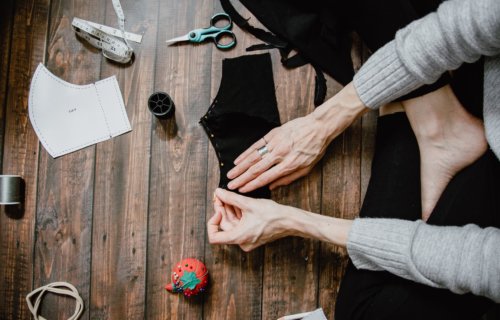New study shows the best and worst masks when it comes to protecting yourself from the coronavirus.
TUCSON, Ariz. — Health experts may not have all the answers regarding COVID-19, but they agree on one thing: wearing a mask can stop it from spreading. The tough question for people who can’t stay home is which mask is the best to wear? For those opting for a homemade mask, a new study finds a surprising home appliance provides the best protection. Researchers at the University of Arizona say the filter from a vacuum cleaner provides a good defense against the virus.
The study in the Journal of Hospital Infection finds putting a vacuum filter inside a cloth mask significantly cuts the risk of COVID-19 infection. When exposed to highly contaminated environments for 30 seconds, these filters drop that risk by 83 percent. If you have to spend 20 minutes in that location, vacuum filters drop the chance of exposure by 58 percent.
Other inventive solutions researchers say make good face masks include, tea towels, cotton-blend fabrics, and antimicrobial pillowcases. Study author Amanda Wilson adds the best options are still high-quality respirator masks, but their popularity can make buying one a difficult task.
“N99 masks, which are even more efficient at filtering airborne particles than N95 masks, are obviously one of the best options for blocking the virus, as they can reduce average risk by 94-99% for 20-minute and 30-second exposures, but they can be hard to come by, and there are ethical considerations such as leaving those available for medical professionals,” the environmental health sciences doctoral candidate explains in a university release.
Not every homemade mask option is a good option
While your vacuum cleaner might contain some useful parts, some material are as bad as wearing no mask at all. The Arizona team finds scarves only reduce infection risks by 44 percent for 30 seconds of exposure and just 24 percent for 20 minutes.
Previous studies add that neck gaiters and bandanas are equally as ineffective against the pandemic. Infectious droplets can actually break into smaller particles and hang around on these materials, increasing the chance of transmission.
How the weather affects mask effectiveness
Wilson’s team finds the length of your exposure and the weather both play a part in how much risk you face when you go outside. Although the effectiveness of your face covering goes down over time, the study warns this is no reason to go without one.
“That doesn’t mean take your mask off after 20 minutes,” Wilson says. “It does mean that a mask can’t reduce your risk to zero. Don’t go to a bar for four hours and think you’re risk free because you’re wearing a mask. Stay home as much as possible, wash your hands often, wear a mask when you’re out and don’t touch your face.”
When it comes to the weather, humidity is actually your friend during the pandemic.
“Aerosol size can also be affected by humidity,” the study author explains. “If the air is drier, then aerosols become smaller faster. If humidity is higher, then aerosols will stay larger for a longer period of time, dropping out faster.”
Wilson cautions that humidity does cause droplets to fall onto surfaces faster, making them another threat for exposure if you touch them.
No matter which mask you choose, the important thing researchers find is that you wear it properly. Find a mask with a good seal which pinches your nose and don’t wear your face covering beneath the nose or tuck it under the chin.
Like studies? Follow us on Facebook!
